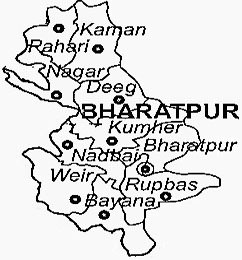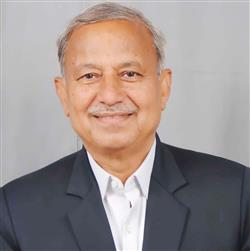

Bharatpur is one of the 200 Legislative Assembly constituencies of Rajasthan state in India. It comes under the Bharatpur district and Matsya region of the state and is a part of the Bharatpur Lok Sabha constituency.
When we talk about the total number of voters in the Bharatpur Vidhan Sabha seat, the estimate is 2,53,420. Out of this, 1,34,088 are male voters, and 1,19,332 are female voters.
In the 2018 Rajasthan elections, the voter turnout in Bharatpur was 67.28%, which was slightly lower than the 70.07% recorded in 2013 and higher than the 56.7% turnout in 2008.
In the 1951 elections, Hari Dutt of the Krishikar Lok Party secured victory, marking the inception of political representation in the region. The following years witnessed a diverse array of elected representatives, reflecting the dynamic nature of Bharatpur’s politics.
In 1957, Hoti Lal ran as an independent candidate and won the election. The 1962 election saw Natthi Singh, also an independent candidate, as successful. The political landscape continued to evolve in 1967 when N. Singh from the Samyukta Socialist Party assumed the role of the representative. The 1972 election marked the entry of Brijendra Singh from the Bharatiya Jana Sangh, a precursor to the Bharatiya Janata Party (BJP). Brijendra Singh’s victory signified the growing influence of right-wing politics in the constituency. However, the political winds shifted in 1977 when Suresh Kumar, representing the Janata Party, clinched the seat.
The 1980 election saw Raj Bahadur of the Indian National Congress taking the helm in Bharatpur. His tenure was succeeded by Girraj Prasad Tiwari, who also represented the Indian National Congress and secured victory in the 1985 election. The 1990 election brought Ram Kishan of the Janata Dal into the limelight, reflecting the changing political dynamics. In 1993 and 1998, R. P. Sharma, representing the Indian National Congress, continued to hold the seat, signifying a consistent support base. In 2003, Vijay Bansal (also known as Pappu Banda) from the Indian National Lok Dal emerged victorious, marking a shift from the Congress dominance. Vijay Bansal continued to secure victory in the 2008 and 2013 elections, this time representing the Bharatiya Janata Party (BJP). In 2013, he won with a lead of 22,694 votes, constituting a 15.36% margin. He secured 38.94% of the total votes cast. His consecutive wins showcased the growing influence of the BJP in Bharatpur.
However, the most recent election in 2018 saw Subhash Garg of the Rashtriya Lok Dal rising to power, introducing a new chapter in Bharatpur’s political history. This historical overview demonstrates the diversity and dynamism of the constituency’s political landscape over the years, reflecting the ever-evolving preferences of its electorate.
For the past two decades, the Bharatpur City legislative assembly seat has been consistently represented by members of the Vaishya (business community). Despite a significant Jat population in the Bharatpur City legislative assembly constituency, both the Congress and BJP tend not to nominate Jat candidates. Prior to 2003, Brahmin candidates were traditionally elected as legislators from Bharatpur City. However, over the last 20 years, the Vaishya community has held sway in this regard.
As the 2023 elections approach, potential candidates have already initiated their campaign efforts in the Bharatpur City legislative assembly constituency. Several Vaishya candidates, including former legislator Vijay Bansal, Girdhari Gupta, Yash Agrawal, Brajesh Agrawal, and Devendra Chamad, are competing for BJP tickets.
Simultaneously, the Jat community is advocating for their representation in the upcoming elections. They have started to press for tickets for their candidates. If a Jat candidate is not nominated, there is a possibility that the Jat community may organise a Mahapanchayat and field an independent candidate.


